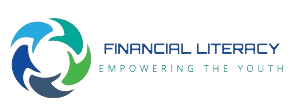Saving, spending & investment decisions are integral parts of our lives, demanding an ever-increasing level of knowledge of the risks & opportunities that come with these decisions. If globally one in three adults are not able to answer questions demanding relatively low levels of financial knowledge, let alone carry out simple numeracy calculations, it is alarming to imagine how these individuals respond when faced with complex choices, from signing a mortgage contract to investing in a pension plan.
At the same time, the financial world is becoming more and more complex, and consumers are increasingly offered a dizzying array of financial products with different levels of risk & reward.
Financial literacy is key to ensure economic access, growth & citizen empowerment; it matters throughout an individual’s life & financial literacy, or the lack of it, has proven implications in the inclusiveness & inclusive growth, particularly in the EU.
However, it is a field not always ensured especially among the youngest generation (but not exclusively).
On average, just 52 percent of adults are financially literate in Europe. When coming to youngster generations & according to the PISA 2018 financial literacy assessment, the gap in financial literacy performance between the highest- and lowest performing OECD countries/economies was 97 points, and the difference between the highest- and lowest-performing countries/economies was over 60% larger (159 points) showing great inequality & extensive illiteracy mainly related to socio- economic status.
In this context, the main goals of this financial guide are to:
1. Highlight and provide easy to understand key financial concepts directly needed to raise financial literacy levels in society and favour financially independent and empowered citizens.
2. Contribute to increasing the financial literacy of youth workers directly working with disadvantaged youngsters, especially those that do not feel necessarily equipped with the financial knowledge and competences they need to better integrate them in their habitual youth practices and programs.
3. Provide a conceptual guide for Youth Workers that work with disadvantaged youth in an easy and clear language ensuring that the concepts are understandable by basic-level education participants
4. Increase social and labor market inclusion and entrepreneurial skills of disadvantaged young people by boosting key & basic financial knowledge.

Financial Literacy Guide

Guía de Educación Financiera

Guide de littératie financière

ფინანსური წიგნიერების გზამკვლევი

Οδηγός Χρηματοοικονομικής Εκπαίδευσης

